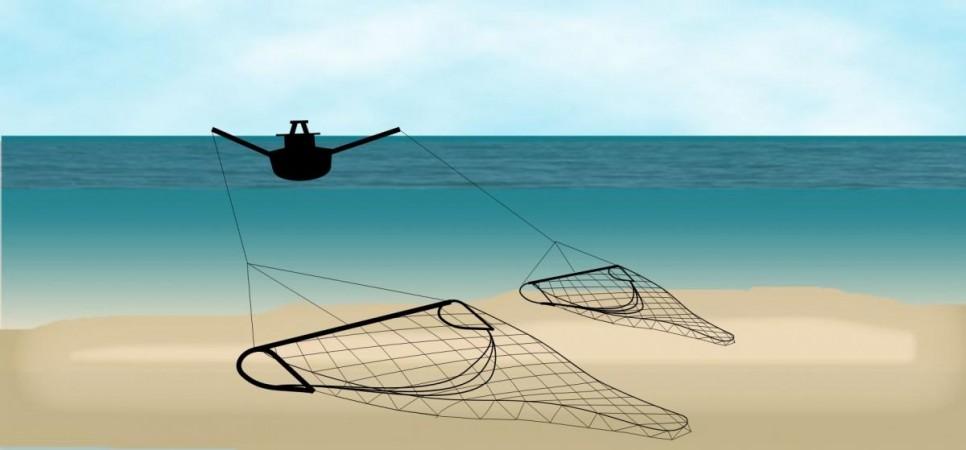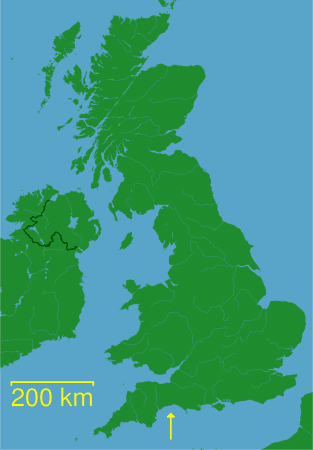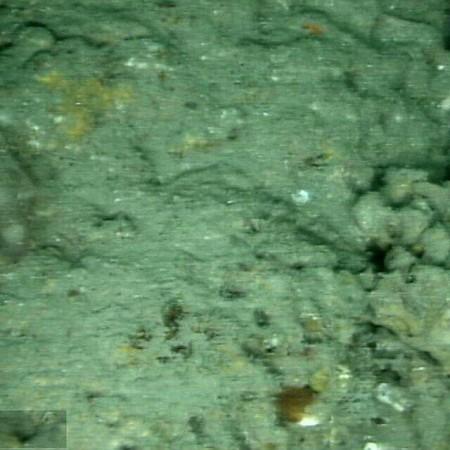Nature's approach towards creation and destruction is simple—What it creates, it destroys. And what it destroys, it recreates. Whenever a natural adverse event occurs, nature heals on its own. However, even nature cannot bounce back at pace to keep up with human-caused devastation. Confirming this notion, a new study has found that seabeds can recover much faster from damage caused by extreme storms than from that caused by certain fishing activities.
According to a new study by researchers from the University of Plymouth, extreme storms can cause similar levels of damage to the seabed as extended periods of bottom-towed fishing. However, crucial seabed species and habitats can recover faster from storm-caused damage than that resulting from the fishing method, the research found.
The study was published in the journal Frontiers in Marine Science. It compared the recuperation of seabed habitat in Lyme Bay, a marine protected area (MPA) in the UK following a storm in 2013-14, and a ban on bottom-towed fishing in 2008. "This paper therefore provides an insight into the likely extent and magnitude of ecological responses of seabed ecosystems to future extreme disturbance events," wrote the authors.
Fishing at the Ocean Floor

Bottom-towed fishing, also known as bottom trawling, is a form of fishing where a 'trawl' ( a type of fishing net) is dragged along the ocean floor. Bottom trawling is divided into two types—benthic trawling and demersal trawling. In benthic trawling nets are towed at the very bottom of the ocean, while in demersal trawling nests are towed a little above the ocean floor.
Certain species of crabs, shrimps, and fishes that are found only at and around the ocean floor (or the benthic zone) are herded and captured using bottom trawling. However, it poses a serious risk to other marine animals such as sea turtles and mammals that get trapped or entangled in these nets.
Recovery from an Extreme Storm
Researchers from the University of Plymouth have been surveilling the Lyme Bay MPA, off the coast of southern England since, 2008. It was when bottom-towed fishing was banned in the area as a conservation measure. The seabed has been monitored using underwater cameras and other methods. They successfully demonstrated that numerous species returned to the area following its designation as an MPA, which led to the considerable recovery of seabed life.

Nevertheless, no prior study has evaluated the manner in which extreme storms affect seabed habitats or the possible role of MPAs in increasing the resilience of the ecosystem from storms. Through the first-of-its-kind study, the team analyzed the impact of the Atlantic winter storms of 2013-14 that hit Europe.
The storm is regarded as the most energetic storm to hit Western Europe since 1948. Therefore, the authors analyzed 11 years of data from the Lyme Bay MPA that was split into four time periods—Early (2008–2010), Peak (2011–2013), Storm (2014), and Recovery (2016–2018).
"In our assessments in 2014, it appeared the previous winter's storms had devastated the MPA. Loose sediments and other debris were prolific where life and biogenic reef habitat had been observed the year before. However, by 2016, large numbers of adult pink sea fans and other species were being observed once again with more juvenile pink sea fans than ever before," said Dr.Emma Sheehan, lead author of the study, in a statement.
Slow Recovery from Human Damage

In 2008, bottom-towed fishing was banned across 60 nautical square miles of the bay in order to protect seabed life such as reefs and others organisms. This was done in order to enable the recovery of benthic habitats from the damage caused by this method of fishing. The designated area of restrictions was increased to 90 square miles in 2010.
Therefore, the scientists monitoring the bay—since the curbing of bottom-towed fishing—had data regarding the health of the seabed ecosystem and the impact of the ban on it. Its evaluation provided an interesting result—the initial recovery of the assemblages in the area was a lot slower after the ceasing of extensive towed fishing in 2008. This was in comparison to the rate at which the seabed recovered after the 2013-14 storm.

"It showed the MPA's recovery had begun almost immediately whereas, by contrast, it took more than three years for such patterns to be seen following its initial designation," highlighted Dr. Sheehan.
Preparing for the Future
In the study, the authors emphasized that marine ecosystems will only be under greater pressure as a result of global climate change. Natural disturbance events such as extreme storms will become increasingly intense, and MPAs across the world will reel under this burden.
"Given the sheer power of extreme storms, there is very little that can be done to prevent widespread damage being caused when they occur. However, as such storms are likely to become more frequent as a result of climate change, a large proportion of the UK's coastline could experience extreme wave conditions similar to or greater than those seen in Lyme Bay in 2013/14," noted Dr. Martin Attrill, senior author of the study.
However, the team pointed out that improved conservation measures across MPAs and surrounding areas can greatly improve their health, and provide them with a fighting chance of recovery post extreme events. "What we therefore need to do is expand protection measures which improve the general health of the seabed and enhance its powers of resilience and recovery," expressed Dr. Attrill.















